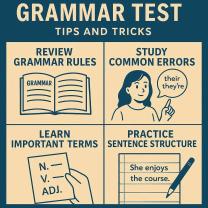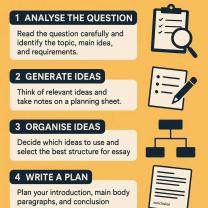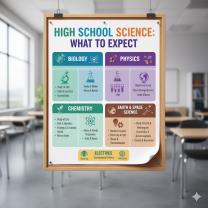What are the different methods of classroom management?
Classroom management involves a range of methods and strategies that teachers use to create a positive and productive learning environment. These methods are essential for maintaining order, promoting student engagement, and facilitating effective teaching. Here are different methods and strategies for classroom management:
Establish Clear Expectations:
- Clearly communicate classroom rules, routines, and expectations to students from the beginning of the school year. Ensure that students understand what is expected of them regarding behavior, participation, and academic standards.
Positive Reinforcement:
- Use positive reinforcement to motivate and reward students for good behavior and academic achievements. This can include verbal praise, stickers, tokens, or a reward system.
Classroom Rules and Norms:
- Collaboratively establish classroom rules and norms with students. When students have a say in setting rules, they are more likely to take ownership and adhere to them.
Proximity Control:
- Use your physical presence in the classroom to monitor and manage student behavior. Moving closer to a disruptive student can often encourage them to refocus and behave appropriately.
Active Engagement:
- Keep students engaged in the learning process by using interactive teaching methods, asking questions, facilitating discussions, and incorporating hands-on activities.
Positive Teacher-Student Relationships:
- Build positive relationships with students by showing empathy, respect, and care. A strong teacher-student bond can foster a sense of trust and cooperation in the classroom.
Behavior Contracts:
- Implement behavior contracts with individual students who struggle with behavior issues. These contracts outline expectations, consequences, and rewards based on specific goals.
Classroom Design:
- Arrange the classroom layout to minimize distractions and encourage focus on learning. Consider seating arrangements that support collaboration and minimize disruptions.
Time Management:
- Use effective time management techniques to ensure that lessons are well-paced and that students are engaged throughout the class period.
Use of Technology:
- Integrate technology into lessons to enhance engagement and learning. Educational apps, interactive whiteboards, and online resources can be effective tools.
Peer-Mediated Strategies:
- Encourage students to support each other through peer tutoring, mentoring, or cooperative learning. Students can help manage behavior and reinforce classroom expectations.
Conflict Resolution:
- Teach students conflict resolution and problem-solving skills to address interpersonal issues in a constructive manner.
Choice and Autonomy:
- Provide students with choices within boundaries, allowing them to have some control over their learning and classroom activities.
Effective Communication:
- Maintain open and effective communication with students. Listen to their concerns, provide clear instructions, and be responsive to their needs.
Consistency:
- Be consistent in enforcing rules and consequences. When students know what to expect, they are more likely to follow classroom norms.
Self-Regulation Techniques:
- Teach students self-regulation strategies, such as deep breathing, mindfulness, or time management skills, to help them manage their behavior and emotions.
Individualized Support:
- Recognize that each student is unique and may require different levels of support and strategies. Tailor your approach to meet individual needs.
Reflection and Feedback:
- Encourage students to reflect on their behavior and academic progress. Provide constructive feedback and opportunities for self-improvement.
Effective classroom management is an ongoing process that requires flexibility and adaptation to the needs of the students and the dynamics of the classroom. Experienced teachers often use a combination of these methods and strategies to create a positive and productive learning environment.
Managing the Classroom Effectively: Different Methods and Approaches
There are many different methods and approaches to managing the classroom effectively. Some of the most common methods include:
- Positive reinforcement: Positive reinforcement involves rewarding students for good behavior. This can be done with verbal praise, stickers, tokens, or other rewards.
- Negative reinforcement: Negative reinforcement involves removing a negative stimulus when a student exhibits good behavior. For example, a teacher might remove a student's name from the board after they have completed a task without talking out of turn.
- Punishment: Punishment involves giving a student a negative consequence for bad behavior. This could include detention, loss of privileges, or a time-out.
- Classroom rules and procedures: Classroom rules and procedures are clear and concise expectations for student behavior. They should be established at the beginning of the year and reviewed regularly.
- Teacher presence: Teacher presence is the teacher's ability to command the attention of the class and establish a sense of respect. Teachers can achieve teacher presence by being assertive, organized, and prepared.
The best approach to classroom management will vary depending on the individual teacher and students. However, all effective classroom management strategies should be fair and consistent.
Creating a Positive Learning Environment: Exploring Classroom Management Methods
A positive learning environment is essential for student success. When students feel safe and respected, they are more likely to be engaged and motivated. Teachers can create a positive learning environment by using effective classroom management methods.
Some tips for creating a positive learning environment include:
- Building relationships with students: Get to know your students and their interests. This will help you to create a more positive and supportive classroom environment.
- Establishing clear expectations: Make sure your students know what is expected of them in terms of behavior and academic performance.
- Being fair and consistent: Apply the same rules and consequences to all students. This will help to create a sense of fairness and justice in the classroom.
- Using positive reinforcement: Focus on rewarding students for good behavior. This will help to create a more positive and motivating learning environment.
- Creating a sense of community: Help students to feel like they are part of a community within the classroom. This can be done by encouraging cooperative learning activities and by celebrating student successes.
From Chaos to Calm: Strategies and Techniques for Classroom Management
If you are struggling to manage your classroom, there are a few strategies and techniques that you can try:
- Be prepared: The more prepared you are, the less likely you are to lose your cool in the classroom. Make sure you have a plan for each lesson and that your materials are organized.
- Set clear expectations: Make sure your students know what is expected of them in terms of behavior and academic performance. Post classroom rules and procedures in a prominent place and review them regularly.
- Be consistent: Apply the same rules and consequences to all students. This will help to create a sense of fairness and justice in the classroom.
- Use positive reinforcement: Focus on rewarding students for good behavior. This will help to create a more positive and motivating learning environment.
- Take breaks: If you are feeling overwhelmed, take a few minutes to step outside the classroom and clear your head. This will help you to come back to the classroom refreshed and ready to teach.
If you are still struggling to manage your classroom, don't be afraid to ask for help from other teachers, administrators, or parents. There are many people who are willing to help you create a positive and productive learning environment for your students.












